 C64-Archiv descriptions:
C64-Archiv descriptions:
- Scans and stores your C64 – (games) – collection with only a few clicks.
- Easily manages your C64-programs by creating your own categories.
- Starts the C64-programs in different emulators.
- Delivers instructions for the emulators VICE and CCS64.
- Stores the C64-programs from files with the extensions .d64, .d71, .p00, .prg and .t64.
- Stores files by name with the extensions: .tap, .vsf (VICE-snapshot-file) and .c64 (CCS-session-file)
- Stores the C64-programs in files with the extensions: .zip, .7z and .cab.
- Supports multi-language.
Version 3.1 – What’s new?
- NEW: Views “Last started “, “Top 100″ (= Most recently used)
- NEW: Improved Gamebase list with up to 30 columns.
- NEW: Customizing views.
- NEW: Profiles for the emulator Emu64.
- NEW: .CRT, .TXT, .NFO and .DIZ-files can be stored.
- NEW: French translation (Thanks to Max from MCC64.be).
- BUG FIXED: Wrong copy from parameters.
- FIXED: Various minor bugs.
source: Mikes Pages
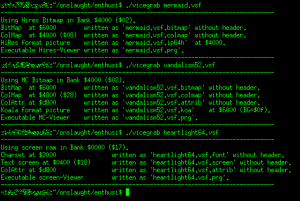 This minimalistic tool extracts various screen modes from a VICE snapshotfile (.vsf).
This minimalistic tool extracts various screen modes from a VICE snapshotfile (.vsf).
Changes since Vice Snapshot Grabber 3.0:
- MultiColor bitmap screens are saved additionally as koala image (.koa). Loadable directly by MultiColor V0.2.1 for example.
- HiRes bitmap screens are saved additionally as interpaint HiRes (.ip64h). Loadable in GIMP with cbmplugs.
source: noname.c64.org
Working Sinclair ZX Spectrum 16k for Spare parts.
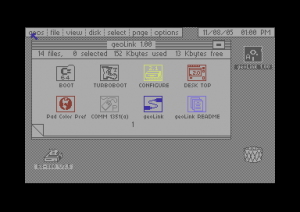 geoLink is a networked GEOS application for the Commodore 64 written by ShadowM using the ip65 network stack.
geoLink is a networked GEOS application for the Commodore 64 written by ShadowM using the ip65 network stack.
It was assembled and linked on the ’64 using geoProgrammer (no cross-assemblers!).
source: lyonlabs.org
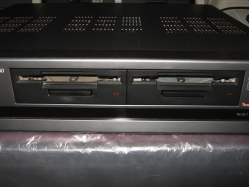
Autopsy:
Installation of a second Floppy Disk Drive for MSX 2 NMS-8250.
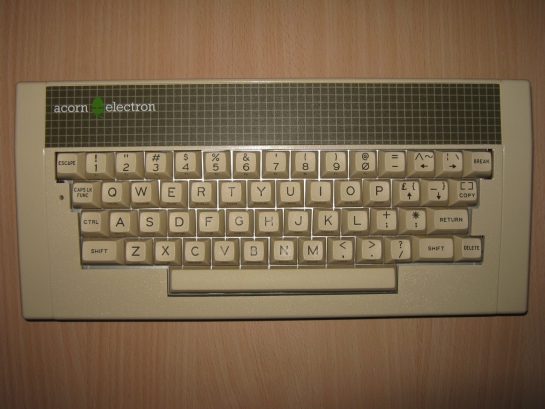
Autopsy:
from wikipedia:
The Acorn Electron is a budget version of the BBC Micro educational/home computer made by Acorn Computers Ltd. It has 32 kilobytes of RAM, and its ROM includes BBC BASIC along with its operating system.
The Electron was able to save and load programs onto audio cassette via a supplied converter cable that connected it to any standard tape recorder that had the correct sockets. It was capable of basic graphics, and could display onto either a television set, a colour (RGB) monitor or a “green screen” monitor.
At its peak, the Electron was the third best selling micro in the United Kingdom, and total lifetime game sales for the Electron exceeded those of the BBC Micro. There are at least 500 known games for the Electron and the true total is probably in the thousands[citation needed]. The hardware of the BBC Micro was emulated by a single customized ULA chip designed by Acorn.
It had feature limitations such as being unable to output more than one channel of sound where the BBC was capable of three-way polyphony (plus one noise channel) and the inability to provide teletext mode.
The ULA controlled memory access and was able to provide 32K × 8 bits of addressable RAM using 4 × 64K × 1-bit RAM chips (4164). Due to needing two accesses to each chip instead of one, and the complications of the video hardware also needing access, reading or writing RAM was much slower than on the BBC Micro.
This meant that although ROM applications ran at the same speed, there was a substantial speed decrease on applications running from RAM.
source: wikipedia
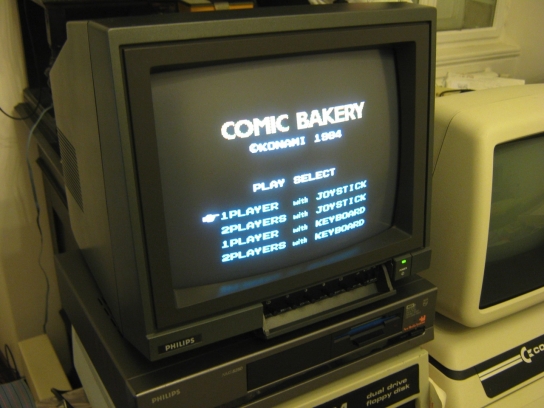
Autopsy:
I fixed two problems of this monitor: the PowerSwitch and the Video Composite input.
The monitor is a VS0080 RGB Color Monitor, which is technically identical to the Commodore 1084 Monitor, but with a black case to match the MSX colors
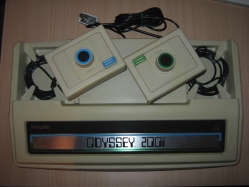
Autopsy:
from pong-story homepage:
Magnavox started to export video games in 1974. At first, Odyssey was exported in 1974 in more than ten countries. Later in 1976, Philips released the Philips Odyssey 200 in several countries including Austria and Germany. Finally, the Philips Odyssey 2001 and the Odyssey 2100 were released in 1977 and 1978.
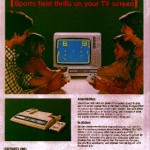 The Odyssey 2001 is nearly same as the Magnavox Odyssey 4000, but it didn’t play the same games. Designed around the National Semiconductor MM-57105 chip, it played three games in color: Tennis, Hockey and Squash. Unlike most PONG games, sound came directly from the TV set. The chip delivered color video signals, as opposed to the black and white games of the General Instruments game chips, which could use a special color encoder chip.
The Odyssey 2001 is nearly same as the Magnavox Odyssey 4000, but it didn’t play the same games. Designed around the National Semiconductor MM-57105 chip, it played three games in color: Tennis, Hockey and Squash. Unlike most PONG games, sound came directly from the TV set. The chip delivered color video signals, as opposed to the black and white games of the General Instruments game chips, which could use a special color encoder chip.
The game selection was simply done by pressing the button of one of the two controllers, allowing the players to switch from a game to another. The documentation of this console exists in ten languages, although only four foreign patents are shown on the back side of the system. The exact number of countries where this system sold is still unknown. This system is quite common, and Germany seems to be the country where it was most successfull.
source: pong-story.com wikipedia
Sorry, this entry is only available in Italian.
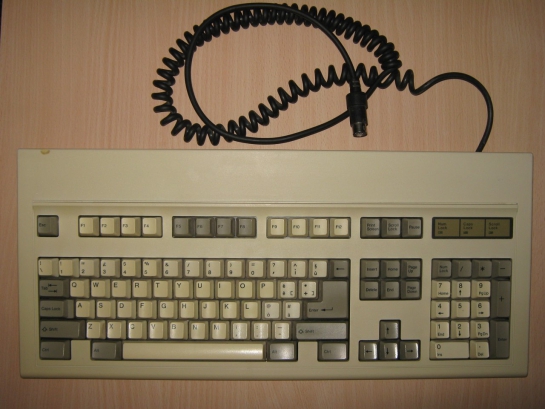
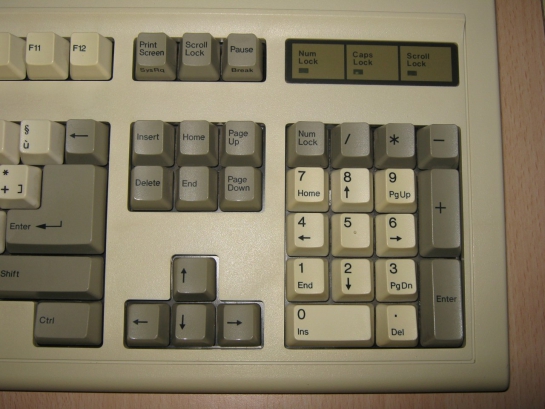
This is a IBM PC Compatible Microswitch Keyboard from 80 years with AT/XT switch.
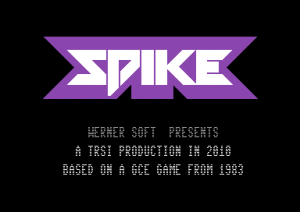 TRSI released a new game for the Commodore C64. The game is a conversion of the Vectrex classic Spike.
TRSI released a new game for the Commodore C64. The game is a conversion of the Vectrex classic Spike.
source: noname.c64.org
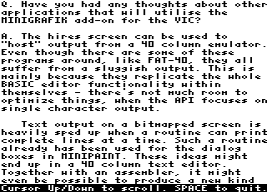 40-column ASCII text viewer with scrolling screen for VIC-20.
40-column ASCII text viewer with scrolling screen for VIC-20.
Requirements: VIC-20 with +8K RAM expansion, or more; disc drive.
source: Denial (The Commodore VIC-20 forum)
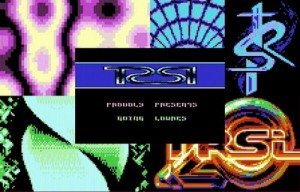 This is a Trackmo with several Effects, Graphics and Tunes, placed 6th at Breakpoint 2010 Wild Compo.
This is a Trackmo with several Effects, Graphics and Tunes, placed 6th at Breakpoint 2010 Wild Compo.
Requirements: VIC20 + 16K RAM + Diskdrive.
source: Denial (The Commodore VIC-20 forum)
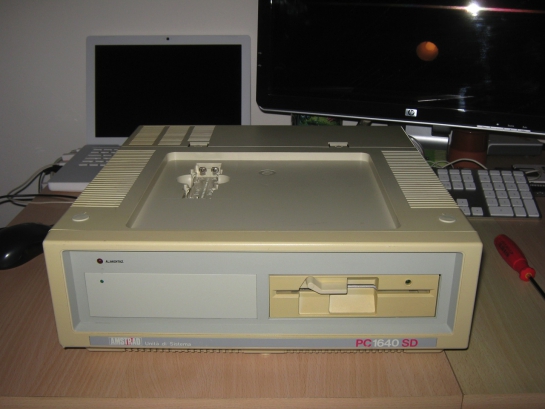
Autopsy:
Amstrad Monitor PC-CD / Mouse / Keyboard and System Discs
from Wikipedia:
The Amstrad PC1512 was Amstrad’s mostly IBM PC-compatible home computer system, first manufactured in 1986. It was later succeeded by the PC1640.
It launched for £499 and sold very well, as it was one of the first cheap PCs in Europe. It significantly helped open up the European PC market to consumers as well as businesses, and Amstrad’s advertising of the PC1512 was aimed at homes rather than offices. The 1512′s influence was such that the UK PC magazine PC Plus originally targeted itself at the “Amstrad PC 1512 and compatibles”, since home ownership of other PCs at the time was rare.
The PC1512 shipped with 512K of RAM; it could be upgraded to 640K of RAM with an expansion pack. Video output was compatible with the CGA standard, with an extension allowing all 16 colours to be used in the 640×200 graphics mode. The CPU of both the PC1512 and the later PC1640 was an 8 MHz Intel 8086, which was sufficient for playing The Secret of Monkey Island, Maniac Mansion and Prince of Persia. The power supply was located in the monitor, which made upgrading difficult.
source: wikipedia
 C64-Archiv descriptions:
C64-Archiv descriptions: This minimalistic tool extracts various screen modes from a VICE snapshotfile (.vsf).
This minimalistic tool extracts various screen modes from a VICE snapshotfile (.vsf).




 geoLink is a networked GEOS application for the Commodore 64 written by ShadowM using the ip65 network stack.
geoLink is a networked GEOS application for the Commodore 64 written by ShadowM using the ip65 network stack.



















































 The Odyssey 2001 is nearly same as the Magnavox Odyssey 4000, but it didn’t play the same games. Designed around the National Semiconductor MM-57105 chip, it played three games in color: Tennis, Hockey and Squash. Unlike most PONG games, sound came directly from the TV set. The chip delivered color video signals, as opposed to the black and white games of the General Instruments game chips, which could use a special color encoder chip.
The Odyssey 2001 is nearly same as the Magnavox Odyssey 4000, but it didn’t play the same games. Designed around the National Semiconductor MM-57105 chip, it played three games in color: Tennis, Hockey and Squash. Unlike most PONG games, sound came directly from the TV set. The chip delivered color video signals, as opposed to the black and white games of the General Instruments game chips, which could use a special color encoder chip.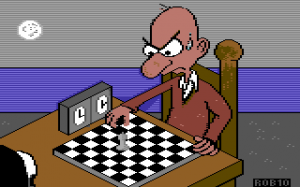
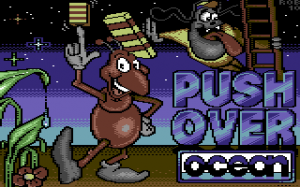



 40-column ASCII text viewer with scrolling screen for VIC-20.
40-column ASCII text viewer with scrolling screen for VIC-20. This is a Trackmo with several Effects, Graphics and Tunes, placed 6th at Breakpoint 2010 Wild Compo.
This is a Trackmo with several Effects, Graphics and Tunes, placed 6th at Breakpoint 2010 Wild Compo.


















Recent Comments